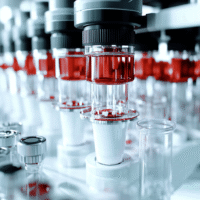Understanding the Study Results
This study looked at how two types of cheese—Jarlsberg and Norvegia—affect Nordic skiers’ muscle strength and endurance during their training period. Here’s what we found:
What Worked?
- Both types of cheese, when combined with off-season training, improved muscle strength, lean body mass (LBM), and VO₂ max (a measure of endurance).
- There was a trend suggesting that Jarlsberg cheese might lead to slightly better upper body muscle strength compared to Norvegia cheese, although the difference wasn’t statistically significant.
What Didn’t Work?
- There were no significant differences in lower body muscle strength between the two cheese groups.
- Overall, both cheeses worked similarly well for the participants.
How Does This Help Patients or Clinics?
- Patients, especially athletes, can consider including Jarlsberg cheese in their diet to potentially enhance their training outcomes.
- Clinics can recommend these types of cheese as part of a balanced diet for athletes aiming to improve strength and endurance.
Real-World Opportunities
- Hospitals and clinics can integrate dietary advice about cheese into their nutrition programs for athletes.
- Nutritionists can develop meal plans that include Jarlsberg cheese for training athletes.
Measurable Outcomes
- Track changes in muscle strength using exercises like seated pulldown and half-squat.
- Measure lean body mass with DXA scans.
- Monitor VO₂ max to evaluate endurance improvements.
AI Tools
- Consider using AI nutrition apps that can help athletes track their diet, including cheese consumption, to optimize their training results.
Step-by-Step Plan for Clinics
- Start by educating staff about the benefits of Jarlsberg cheese for athletes.
- Incorporate discussions about dietary choices into patient training programs.
- Monitor patient progress by regularly measuring muscle strength, lean body mass, and endurance.
- Gather feedback on diet changes and adjust recommendations as needed.
- Expand to group classes or workshops focusing on nutrition and training for athletes.
For more detailed information about the research, please visit the original study here.






























